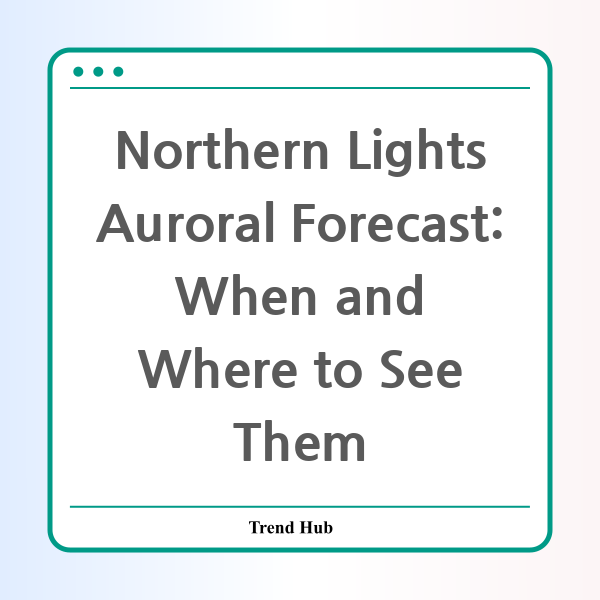* This website participates in the Amazon Affiliate Program and earns from qualifying purchases.

Are you ready to witness one of nature's most stunning displays? The northern lights, or aurora borealis, are captivating many skywatchers as solar activity increases. Here’s your guide to catching a glimpse of this breathtaking phenomenon tonight!
As we enter a period of heightened solar activity, skywatchers across various regions are in for a treat. While Canadians and residents of Alaska typically enjoy the best views of the northern lights, several northern U.S. states are also poised to provide exceptional visibility tonight. A recent solar storm has sent charged particles streaming from the sun, interacting with Earth's magnetosphere, resulting in a vivid auroral display.
Where Can You See the Aurora Borealis?
The aurora is generally most visible around the magnetic poles, particularly in high-latitude regions of Europe, Asia, and North America. Alaska is renowned for its frequent and spectacular displays. However, due to a recent solar storm tracked by meteorological agencies, the lights have been observed much farther south than usual. This is a rare opportunity for residents of the northern U.S. to catch a glimpse of this natural wonder.
Tonight, the northern lights may be visible in:
- Washington
- Idaho
- Montana
- North Dakota
- Minnesota
- Wisconsin
In addition, a thin "viewline" extends to:
- Wyoming
- South Dakota
- Iowa
- Michigan
- New York
- Vermont
- New Hampshire
- Maine
What Is the Best Time to Observe?
While predicting the occurrence of northern lights can be challenging, the best viewing times are typically one to two hours around midnight, especially when the skies are clear. To enhance your viewing experience, head to locations away from the urban light pollution; dark, open spaces provide the best conditions for observing the aurora. To stay updated on northern lights activity, consider utilizing meteorological tracking tools that provide real-time insights.
Understanding the Northern Lights
The mesmerizing auroras emanate from charged particles from the sun colliding with gases in Earth’s atmosphere. This interaction energizes atmospheric particles, which then release energy in the form of colorful lights. The specific hues displayed—ranging from greens and reds to blues and pinks—depend on the altitude of the collisions, as well as atmospheric composition and density.
Why Are Northern Lights Becoming More Visible?
Recent increases in solar activity have led to a surge in what is known as "space weather." Sunspots on the solar surface cause bursts of radiation, resulting in solar flares that can travel to Earth at extraordinary speeds. These flares, sometimes accompanied by coronal mass ejections of plasma and charged particles, can interact with Earth’s magnetosphere, creating auroras in areas where they aren’t typically seen—this trend is expected to continue as NASA predicts the solar maximum phase will persist until 2025.
For avid aurora chasers, this means there will be numerous opportunities in the coming years to witness the northern lights. So, gather your friends, find a great location, and prepare to be awed by one of nature’s most beautiful spectacles.
Conclusion
The northern lights are not just a sight to behold; they are a reminder of the beauty and complexity of our planet's interactions with the cosmos. Whether you are a seasoned aurora chaser or a first-time observer, tonight might just be your night to experience this magical phenomenon. Don’t miss out on this extraordinary opportunity!
* This website participates in the Amazon Affiliate Program and earns from qualifying purchases.